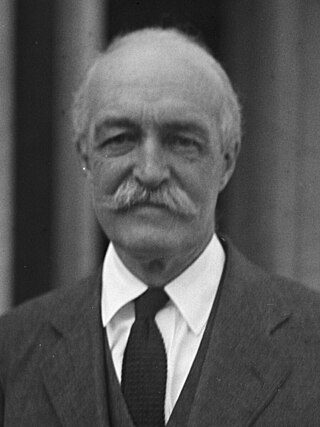
The 1978 United States Senate elections were held on November 7, in the middle of Democratic President Jimmy Carter's term. The 33 seats of Class 2 were contested in regular elections. Special elections were also held to fill vacancies.

The 1976 United States Senate elections was an election for the United States Senate. Held on November 2, the 33 seats of Class 1 were contested in regular elections. They coincided with Democrat Jimmy Carter's presidential election and the United States Bicentennial celebration. Although almost half of the seats decided in this election changed parties, Carter's narrow victory did not provide coattails for the Democratic Party. Each party flipped seven Senate seats, although, one of the seats flipped by Democrats was previously held by a Conservative.

The 1970 United States Senate elections was an election for the United States Senate. It took place on November 3, with the 33 seats of Class 1 contested in regular elections. Special elections were also held to fill vacancies. These races occurred in the middle of Richard Nixon's first term as president. The Democrats lost a net of three seats, while the Republicans and the Conservative Party of New York picked up one net seat each, and former Democrat Harry F. Byrd Jr. was re-elected as an independent.

The 1964 United States Senate elections were held on November 3. The 33 seats of Class 1 were contested in regular elections. Special elections were also held to fill vacancies. They coincided with the election of President Lyndon B. Johnson by an overwhelming majority, to a full term. His Democratic Party picked up a net two seats from the Republicans. As of 2023, this was the last time either party has had a two-thirds majority in the Senate, which allowed the Senate Democrats to override a veto, propose constitutional amendments, or convict and expel certain officials without any votes from Senate Republicans. However, internal divisions would have prevented the Democrats from having done so. The Senate election cycle coincided with Democratic gains in the House in the same year.

The 1930 United States Senate elections occurred in the middle of Republican President Herbert Hoover's term. The 32 seats of Class 2 were contested in regular elections, and special elections were held to fill vacancies. With the Great Depression beginning to take hold, Republican incumbents became unpopular, and Democrats picked up a net of eight seats, erasing the Republican gains from the previous election cycle, however, Republicans retained control of the chamber. This was the first of four consecutive Senate elections during the Depression in which Democrats made enormous gains, achieving a cumulative pick-up of 34 seats.

The 1980 United States Senate election in Pennsylvania was held on November 4, 1980. Incumbent Republican U.S. Senator Richard Schweiker decided to retire, instead of seeking a third term.

The 2012 United States Senate election in Tennessee took place on November 6, 2012, as part of the general election including the 2012 U.S. presidential election, elections to the House of Representatives and various state and local elections. Incumbent Republican U.S. Senator Bob Corker won a second term in a landslide, carrying all but two counties in the state.
The 1966 Massachusetts general election was held on November 8, 1966, throughout Massachusetts. Primary elections took place on September 13.

The 1934 United States Senate election in Minnesota took place on November 6, 1934. Incumbent Farmer–Labor U.S. Senator Henrik Shipstead defeated former State Senator Nathaniel J. Holmberg of the Republican Party of Minnesota and U.S. Representative Einar Hoidale of the Minnesota Democratic Party to win a third term.

The 1944 United States Senate election in Pennsylvania was held on November 7, 1944. Incumbent Republican U.S. Senator James J. Davis sought re-election, but was defeated by Democratic nominee Francis J. Myers.

The 1932 United States Senate election in Pennsylvania was held on November 8, 1932. Incumbent Republican U.S. Senator James J. Davis successfully sought re-election, defeating Democratic nominee Lawrence H. Rupp.
Sedgwick Kistler was a Democratic political figure from Lock Haven, Pennsylvania.

The 1950 United States Senate election in Pennsylvania was held on November 7, 1950. Incumbent Democratic U.S. Senator Francis J. Myers sought re-election, but was defeated by Republican nominee James H. Duff. As of 2021, this is the last time that Lycoming County voted Democratic in a Senate election.

The 1930 Pennsylvania gubernatorial election occurred on November 4, 1930. Incumbent Republican governor John Stuchell Fisher was not a candidate for re-election. Republican candidate and former governor Gifford Pinchot defeated Democratic candidate John M. Hemphill to win a second, non-consecutive term as Governor of Pennsylvania.

The 1968 United States Senate election in Kansas took place on November 5, 1968, concurrently with the U.S. presidential election as well as other elections to the United States Senate in other states as well as elections to the United States House of Representatives and various state and local elections.

The 1922 United States Senate election in Minnesota took place on November 7, 1922. Farmer–Labor challenger Henrik Shipstead defeated incumbent Republican U.S. Senator Frank B. Kellogg and Democratic challenger Anna Dickie Olesen.

The 1972 United States Senate election in New Jersey was held on November 7, 1972. Incumbent Republican Clifford P. Case defeated Democratic nominee Paul J. Krebs with 62.46% of the vote.
A Massachusetts general election was held on November 6, 1956, in the Commonwealth of Massachusetts.

The 1916 United States Senate election in New York was held on November 7, 1916. Incumbent Democratic Senator James O'Gorman chose not to seek re-election. Republican William M. Calder was elected to a succeed O'Gorman, defeating Democrat William F. McCombs.
The 1944 Massachusetts general election was held on November 7, 1944, throughout Massachusetts. Primary elections took place on July 11.



















